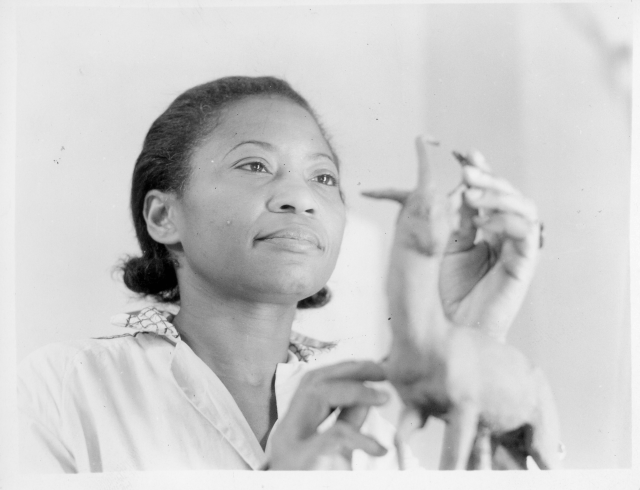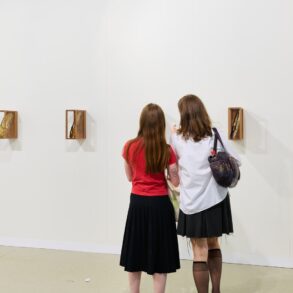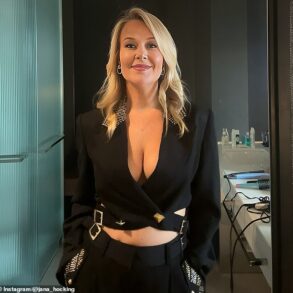Image courtesy of Manuscripts and Archives Division, The New York Public Library.
” data-medium-file=”https://i0.wp.com/www.girltalkhq.com/wp-content/uploads/2024/05/Searching-for-Augusta-Savage-Title-Graphic.jpg?fit=300%2C211&ssl=1″ data-large-file=”https://i0.wp.com/www.girltalkhq.com/wp-content/uploads/2024/05/Searching-for-Augusta-Savage-Title-Graphic.jpg?fit=640%2C450&ssl=1″ src=”https://i0.wp.com/www.girltalkhq.com/wp-content/uploads/2024/05/Searching-for-Augusta-Savage-Title-Graphic.jpg?resize=640%2C450&ssl=1″ alt class=”wp-image-86558″ srcset=”https://i0.wp.com/www.girltalkhq.com/wp-content/uploads/2024/05/Searching-for-Augusta-Savage-Title-Graphic.jpg?w=673&ssl=1 673w, https://i0.wp.com/www.girltalkhq.com/wp-content/uploads/2024/05/Searching-for-Augusta-Savage-Title-Graphic.jpg?resize=300%2C211&ssl=1 300w, https://i0.wp.com/www.girltalkhq.com/wp-content/uploads/2024/05/Searching-for-Augusta-Savage-Title-Graphic.jpg?resize=78%2C55&ssl=1 78w, https://i0.wp.com/www.girltalkhq.com/wp-content/uploads/2024/05/Searching-for-Augusta-Savage-Title-Graphic.jpg?resize=640%2C450&ssl=1 640w” sizes=”(max-width: 640px) 100vw, 640px” data-recalc-dims=”1″>
Art is often considered a fairly progressive medium, outside the hard lines of politics and discrimination that is rampant in other industries. But art has always been a canvas for projecting political, social and cultural narratives throughout history, and it has equally been impacted by these areas. A 2019 analysis by Williams College of more than 40,000 works of art in the permanent collections of 18 major museums revealed that 85% of the artists exhibited in the most visited U.S. museums are white, and 87% are male. Just 0.5% of acquisitions were the work of Black women.
It is a mind-boggling to think of all the incredible artistry and creativity the world has missed out on simply because of the racial barriers that have existed within the art world for many years. But with the advancement of technology, today we have more opportunities than ever to discover and share stories that have for too long been hidden away or deliberately silenced.
One of those opportunities is through film and media. ‘Searching for Augusta Savage‘, a new 22-minute documentary film, tells the story of an inspiring and enterprising artist, who in the 1920s and 30s, created a pipeline of creative opportunities for Black artists, yet remains nearly invisible today.
Sculptor Augusta Savage opened the first gallery in the U.S. dedicated to exhibiting the work of Black artists in 1939. She also founded several organizations that provided free art education and training to 2,500 people, and mentored many artists who are celebrated today, including Romare Bearden, Gwendolyn Knight, Jacob Lawrence, Selma Burke, Norman Lewis, and Kenneth B. Clark. Savage was the first African American elected to the National Association of Women Painters and Sculptors, later renamed the National Association of Women Artists, and was the only Black artist, and one of four women commissioned to create an exhibit for the 1939 World’s Fair in Flushing, New York.
Savage was an arts activist, advocating for the work of African Americans to be exhibited in mainstream venues, and was extremely prolific, creating works while in New York, Paris and Florida. Yet only about half of the approximately 160 pieces of sculpture she created have survived today, and little is known about her extensive accomplishments.
‘Searching for Augusta Savage’ investigates why evidence of Savage’s life and legacy appears to have been erased. Dr. Denise Murrell, Merryl H. and James S. Tisch Curator at Large at The Metropolitan Museum of Art, provides analysis in the film about why Savage’s work is missing from most museum collections, stating that, “[In] the museum market, the art market, the galleries, the critical attention was given to male artists.”
Narrated by art historian and curator Jeffreen M. Hayes, Ph.D. (traveling exhibit and book, Augusta Savage: Renaissance Woman), with Lorraine Toussaint (Orange is the New Black, The Glorias, The Equalizer) providing dramatic readings of the words of Augusta Savage, ‘Searching for Augusta Savage’ premiered digitally on the ‘American Masters’ YouTube channel, PBS.org and the PBS App.
‘Searching for Augusta Savage’ is executive produced, directed and written by Charlotte Mangin and Sandra Rattley, the makers of UNLADYLIKE2020, the award-winning series of animated documentary shorts distributed by ‘American Masters’, which profiles 26 little-known, diverse women history makers, whose acts of courage changed this nation before women had the right to vote.
Mangin says, “’Searching for Augusta Savage’ continues our dedication to bringing untold stories to life, as Augusta Savage was a major contributor to the Harlem Renaissance, who resisted racism and sexism throughout her career, yet her accomplishments are little known.”
Rattley adds that, “Audacious Women Productions is proud to revive ‘Lift Every Voice and Sing,’ one of Savage’s best known works, commissioned for the 1939 New York World’s Fair, that was bulldozed when the fair ended and only exists today in souvenir miniatures and archival photographs. Our digital reconstruction of this missing monument helps to expand the archive and reverse Savage’s erasure.”
As the filmmakers continue to hold screening events and panel discussions at venues such as the New York Public Library, Metropolitan Museum of Art, Cooper Union and other institutions around the country, we had the opportunity to speak with both Sandra Rattley and Charlotte Mangin about this film, why it was important for them to uplift the untold story of August Savage, and the process of piecing together assets and media for a documentary about an artist who has largely been erased or missing from the conversation.
” data-medium-file=”https://i0.wp.com/www.girltalkhq.com/wp-content/uploads/2024/05/SFAS_1035_Sandra-Rattley-headshot.jpg?fit=246%2C300&ssl=1″ data-large-file=”https://i0.wp.com/www.girltalkhq.com/wp-content/uploads/2024/05/SFAS_1035_Sandra-Rattley-headshot.jpg?fit=640%2C782&ssl=1″ data-id=”86564″ src=”https://i0.wp.com/www.girltalkhq.com/wp-content/uploads/2024/05/SFAS_1035_Sandra-Rattley-headshot.jpg?resize=640%2C782&ssl=1″ alt class=”wp-image-86564″ srcset=”https://i0.wp.com/www.girltalkhq.com/wp-content/uploads/2024/05/SFAS_1035_Sandra-Rattley-headshot.jpg?resize=838%2C1024&ssl=1 838w, https://i0.wp.com/www.girltalkhq.com/wp-content/uploads/2024/05/SFAS_1035_Sandra-Rattley-headshot.jpg?resize=246%2C300&ssl=1 246w, https://i0.wp.com/www.girltalkhq.com/wp-content/uploads/2024/05/SFAS_1035_Sandra-Rattley-headshot.jpg?resize=768%2C938&ssl=1 768w, https://i0.wp.com/www.girltalkhq.com/wp-content/uploads/2024/05/SFAS_1035_Sandra-Rattley-headshot.jpg?resize=45%2C55&ssl=1 45w, https://i0.wp.com/www.girltalkhq.com/wp-content/uploads/2024/05/SFAS_1035_Sandra-Rattley-headshot.jpg?resize=640%2C782&ssl=1 640w, https://i0.wp.com/www.girltalkhq.com/wp-content/uploads/2024/05/SFAS_1035_Sandra-Rattley-headshot.jpg?w=884&ssl=1 884w” sizes=”(max-width: 640px) 100vw, 640px” data-recalc-dims=”1″>
” data-medium-file=”https://i0.wp.com/www.girltalkhq.com/wp-content/uploads/2024/05/SFAS_1033_Charlotte-Mangin-headshot.jpg?fit=225%2C300&ssl=1″ data-large-file=”https://i0.wp.com/www.girltalkhq.com/wp-content/uploads/2024/05/SFAS_1033_Charlotte-Mangin-headshot.jpg?fit=640%2C853&ssl=1″ data-id=”86563″ src=”https://i0.wp.com/www.girltalkhq.com/wp-content/uploads/2024/05/SFAS_1033_Charlotte-Mangin-headshot.jpg?resize=640%2C853&ssl=1″ alt class=”wp-image-86563″ srcset=”https://i0.wp.com/www.girltalkhq.com/wp-content/uploads/2024/05/SFAS_1033_Charlotte-Mangin-headshot.jpg?resize=768%2C1024&ssl=1 768w, https://i0.wp.com/www.girltalkhq.com/wp-content/uploads/2024/05/SFAS_1033_Charlotte-Mangin-headshot.jpg?resize=225%2C300&ssl=1 225w, https://i0.wp.com/www.girltalkhq.com/wp-content/uploads/2024/05/SFAS_1033_Charlotte-Mangin-headshot.jpg?resize=41%2C55&ssl=1 41w, https://i0.wp.com/www.girltalkhq.com/wp-content/uploads/2024/05/SFAS_1033_Charlotte-Mangin-headshot.jpg?resize=1152%2C1536&ssl=1 1152w, https://i0.wp.com/www.girltalkhq.com/wp-content/uploads/2024/05/SFAS_1033_Charlotte-Mangin-headshot.jpg?resize=640%2C853&ssl=1 640w, https://i0.wp.com/www.girltalkhq.com/wp-content/uploads/2024/05/SFAS_1033_Charlotte-Mangin-headshot.jpg?w=1512&ssl=1 1512w, https://i0.wp.com/www.girltalkhq.com/wp-content/uploads/2024/05/SFAS_1033_Charlotte-Mangin-headshot.jpg?w=1280&ssl=1 1280w” sizes=”(max-width: 640px) 100vw, 640px” data-recalc-dims=”1″>
When did you begin working on ‘Searching for Augusta Savage’ together, and what initially drew you both to the story?
Sandra Rattley, Charlotte Mangin: We have been working together as filmmaking partners for over a decade, since 2012. We received our first funding for Searching for Augusta Savage from the National Endowment for the Arts in February 2023. We continued to fundraise, hired staff and began pre-production for this film in July 2023. In our prior work, the series ‘Unladylike2020’, which premiered on PBS/American Masters for the centennial of women’s suffrage, we documented the lives and accomplishments of women history makers who were active between 1890 and 1920 in the public spheres of labor rights, suffrage and voting rights, government policy and politics.
We were excited to find and tell the story of Augusta Savage, a woman, a Black women in particular, who was active in the 1920s and 30s as an arts activist, who was dedicated to making space for African American artists, and challenged the stereotypical representations of Black people and Black life in the art of that time period.
You are well known for your work amplifying the stories of diverse female history makers in the United States. Why is it important to you to make sure stories like these are seen and heard through film and media?
SR, CM: Women have been active and instrumental in making history and helping to establish a democratic process of governance since the earliest days of this nation. Yet their accomplishments are rarely represented in the history and social studies that are taught, the monuments and public commemorations that are visible, or media representations of noteworthy Americans. This is an important part of American history that young and old should know, to ensure that our pride of national identity includes the heroism and contributions of women.
” data-medium-file=”https://i0.wp.com/www.girltalkhq.com/wp-content/uploads/2024/05/SFAS_1029_Behind-the-scenes-interview-with-Dr.-Denise-Murrell-scaled.jpg?fit=300%2C225&ssl=1″ data-large-file=”https://i0.wp.com/www.girltalkhq.com/wp-content/uploads/2024/05/SFAS_1029_Behind-the-scenes-interview-with-Dr.-Denise-Murrell-scaled.jpg?fit=640%2C480&ssl=1″ src=”https://i0.wp.com/www.girltalkhq.com/wp-content/uploads/2024/05/SFAS_1029_Behind-the-scenes-interview-with-Dr.-Denise-Murrell-scaled.jpg?resize=640%2C480&ssl=1″ alt class=”wp-image-86567″ srcset=”https://i0.wp.com/www.girltalkhq.com/wp-content/uploads/2024/05/SFAS_1029_Behind-the-scenes-interview-with-Dr.-Denise-Murrell-scaled.jpg?w=2560&ssl=1 2560w, https://i0.wp.com/www.girltalkhq.com/wp-content/uploads/2024/05/SFAS_1029_Behind-the-scenes-interview-with-Dr.-Denise-Murrell-scaled.jpg?resize=300%2C225&ssl=1 300w, https://i0.wp.com/www.girltalkhq.com/wp-content/uploads/2024/05/SFAS_1029_Behind-the-scenes-interview-with-Dr.-Denise-Murrell-scaled.jpg?resize=1024%2C768&ssl=1 1024w, https://i0.wp.com/www.girltalkhq.com/wp-content/uploads/2024/05/SFAS_1029_Behind-the-scenes-interview-with-Dr.-Denise-Murrell-scaled.jpg?resize=768%2C576&ssl=1 768w, https://i0.wp.com/www.girltalkhq.com/wp-content/uploads/2024/05/SFAS_1029_Behind-the-scenes-interview-with-Dr.-Denise-Murrell-scaled.jpg?resize=73%2C55&ssl=1 73w, https://i0.wp.com/www.girltalkhq.com/wp-content/uploads/2024/05/SFAS_1029_Behind-the-scenes-interview-with-Dr.-Denise-Murrell-scaled.jpg?resize=1536%2C1152&ssl=1 1536w, https://i0.wp.com/www.girltalkhq.com/wp-content/uploads/2024/05/SFAS_1029_Behind-the-scenes-interview-with-Dr.-Denise-Murrell-scaled.jpg?resize=2048%2C1536&ssl=1 2048w, https://i0.wp.com/www.girltalkhq.com/wp-content/uploads/2024/05/SFAS_1029_Behind-the-scenes-interview-with-Dr.-Denise-Murrell-scaled.jpg?resize=640%2C480&ssl=1 640w, https://i0.wp.com/www.girltalkhq.com/wp-content/uploads/2024/05/SFAS_1029_Behind-the-scenes-interview-with-Dr.-Denise-Murrell-scaled.jpg?w=1280&ssl=1 1280w, https://i0.wp.com/www.girltalkhq.com/wp-content/uploads/2024/05/SFAS_1029_Behind-the-scenes-interview-with-Dr.-Denise-Murrell-scaled.jpg?w=1920&ssl=1 1920w” sizes=”(max-width: 640px) 100vw, 640px” data-recalc-dims=”1″>
Can you tell us about the process of working with actress Lorraine Toussaint, who voices Augusta in the film?
SR, CM: Award-winning actor Lorraine Toussaint was one of our two narrators for ‘Unladylike2020’, along with Julianna Margulies. So we’ve worked with her previously. Lorraine became an enthusiastic supporter of our work after working on the Unladylike2020 series. She immediately agreed to be a part of the Searching for Augusta Savage film. We recorded her reading the words of Augusta Savage in a sound studio in New York. Lorraine wanted lots of detail about the historical context and the events she was describing so that she could gain an interior perspective to really embody Augusta, especially her resolve and resilience.
Augusta was a pioneer for Black artists in the 1920s and 1930s. Can you give us some insight why her story is so badass and revolutionary for its time?
SR, CM: Often when the Harlem Renaissance is taught or described, there is little mention of the women who were critical to the innovation of expression and representation, as well as the community-building that was accomplished. Augusta Savage was a strong voice and central player. And as was described by one of our informants in the film – she was an activist!
To us, Augusta was a “Black Lives Matter” activist more than a century before that movement was conceived. She centered Black people and Black life in her work at a time when African Americans were typically presented through derogatory and racist stereotypes in art and media. She not only resisted those representations in her own work, but also invested in the success of other Black artists by creating points of access for their training and artistic expression, and supporting their professional development and careers.
It was commendable that Savage invested so much in others, creating a pipeline to success for Black art and artists. She had vision, seeing the end game as something that went beyond her individual career and accomplishments. She definitely took action and made big things happen, making concrete strides to create organizations and institutions to support her mission. That’s an approach that we would argue still has relevance and lasting impact today!
” data-medium-file=”https://i0.wp.com/www.girltalkhq.com/wp-content/uploads/2024/05/SFAS_1032_Recording-session-with-Lorraine-Toussaint-scaled.jpg?fit=300%2C225&ssl=1″ data-large-file=”https://i0.wp.com/www.girltalkhq.com/wp-content/uploads/2024/05/SFAS_1032_Recording-session-with-Lorraine-Toussaint-scaled.jpg?fit=640%2C480&ssl=1″ src=”https://i0.wp.com/www.girltalkhq.com/wp-content/uploads/2024/05/SFAS_1032_Recording-session-with-Lorraine-Toussaint-scaled.jpg?resize=640%2C480&ssl=1″ alt class=”wp-image-86568″ srcset=”https://i0.wp.com/www.girltalkhq.com/wp-content/uploads/2024/05/SFAS_1032_Recording-session-with-Lorraine-Toussaint-scaled.jpg?w=2560&ssl=1 2560w, https://i0.wp.com/www.girltalkhq.com/wp-content/uploads/2024/05/SFAS_1032_Recording-session-with-Lorraine-Toussaint-scaled.jpg?resize=300%2C225&ssl=1 300w, https://i0.wp.com/www.girltalkhq.com/wp-content/uploads/2024/05/SFAS_1032_Recording-session-with-Lorraine-Toussaint-scaled.jpg?resize=1024%2C768&ssl=1 1024w, https://i0.wp.com/www.girltalkhq.com/wp-content/uploads/2024/05/SFAS_1032_Recording-session-with-Lorraine-Toussaint-scaled.jpg?resize=768%2C576&ssl=1 768w, https://i0.wp.com/www.girltalkhq.com/wp-content/uploads/2024/05/SFAS_1032_Recording-session-with-Lorraine-Toussaint-scaled.jpg?resize=73%2C55&ssl=1 73w, https://i0.wp.com/www.girltalkhq.com/wp-content/uploads/2024/05/SFAS_1032_Recording-session-with-Lorraine-Toussaint-scaled.jpg?resize=1536%2C1152&ssl=1 1536w, https://i0.wp.com/www.girltalkhq.com/wp-content/uploads/2024/05/SFAS_1032_Recording-session-with-Lorraine-Toussaint-scaled.jpg?resize=2048%2C1536&ssl=1 2048w, https://i0.wp.com/www.girltalkhq.com/wp-content/uploads/2024/05/SFAS_1032_Recording-session-with-Lorraine-Toussaint-scaled.jpg?resize=640%2C480&ssl=1 640w, https://i0.wp.com/www.girltalkhq.com/wp-content/uploads/2024/05/SFAS_1032_Recording-session-with-Lorraine-Toussaint-scaled.jpg?w=1280&ssl=1 1280w, https://i0.wp.com/www.girltalkhq.com/wp-content/uploads/2024/05/SFAS_1032_Recording-session-with-Lorraine-Toussaint-scaled.jpg?w=1920&ssl=1 1920w” sizes=”(max-width: 640px) 100vw, 640px” data-recalc-dims=”1″>
Your film delves into the reasons why her artwork has largely been erased. Can you share some of the findings audiences will learn about in the film?
SR, CM: Dr. Denise Murrell, one of the informants in the film, and curator for the Metropolitan Museum of Art’s 2024 The Harlem Renaissance and TransAtlantic Modernism exhibit, makes the argument that one of the major factors that affected the art landscape of the time period was that, as she put it:
“The museum market, the art market, the galleries, the critical attention was given to male artists. Even today, 87% of works of art in museum collections are by men.”
That tendency is still largely at play today, with the work of Black women artists representing less than 0.5% of the permanent collections and acquisitions of the most visited and prestigious museums in the U.S. It is unfortunate that despite all she did to support the careers of many artists, including many successful men, few of them reached back to support her.
In addition, we were seeking to understand to what extent racism may have been a factor in Savage’s work not being valued, not being preserved, and her not being able to find funding to cast much of her work in durable materials.
What we know is that she resisted the acts of racism she experienced, for example publicly decrying being denied access to a prestigious sculpture fellowship in France, based solely on her race. She spoke out very bravely about that discrimination at a time when women were not typically heard in public spaces, and especially not Black women.
What is not included in the film is that Savage was also being investigated by the FBI because of her politics and associations with Black nationalist organizations. We did not report that in the film because the copy of her FBI file we were able to access was so heavily redacted that it was impossible to discern what the FBI was investigating.
We know that Augusta Savage was a leading voice of the Harlem Renaissance who used her access, her voice, and her activism in a way that was very public. We can imagine that her activism and outspokenness may have been misunderstood or unappreciated by some sources, such as curators, museum directors, art buyers, collectors, and reviewers of the time period.
What message do you think your film gives about the art world in general, and the ways it has often failed Black artists throughout history?
SR, CM: We think Searching for Augusta Savage raises questions about whose art is valued and why. Savage’s artistic prowess and vision was acclaimed whenever her art was included in exhibits in the U.S. and Europe and was reviewed. She was called “The Scupltress of the Negro People.” The skill and innovation of her work are incontestable.
But nearly half of her portfolio of work is lost, missing or was destroyed, and she was unable to find funding to cast much of her work in durable materials, such as her monumental 16-foot sculpture, “Lift Every Voice and Sing,” created for the 1939 New York World’s Fair and bulldozed when the Fair closed. Savage is definitely one, of undoubtedly untold scores of Black artists, especially Black women, who did not receive the support and recognition they deserved, despite their undeniable talent.
Image by Jane Macedo Yang for Audacious Women Productions.
” data-medium-file=”https://i0.wp.com/www.girltalkhq.com/wp-content/uploads/2024/05/SFAS_1026_Behind-the-scenes-interview-Jeffreen-Hayes-and-Tammi-Lawson-scaled.jpg?fit=300%2C225&ssl=1″ data-large-file=”https://i0.wp.com/www.girltalkhq.com/wp-content/uploads/2024/05/SFAS_1026_Behind-the-scenes-interview-Jeffreen-Hayes-and-Tammi-Lawson-scaled.jpg?fit=640%2C480&ssl=1″ src=”https://i0.wp.com/www.girltalkhq.com/wp-content/uploads/2024/05/SFAS_1026_Behind-the-scenes-interview-Jeffreen-Hayes-and-Tammi-Lawson-scaled.jpg?resize=640%2C480&ssl=1″ alt class=”wp-image-86566″ srcset=”https://i0.wp.com/www.girltalkhq.com/wp-content/uploads/2024/05/SFAS_1026_Behind-the-scenes-interview-Jeffreen-Hayes-and-Tammi-Lawson-scaled.jpg?w=2560&ssl=1 2560w, https://i0.wp.com/www.girltalkhq.com/wp-content/uploads/2024/05/SFAS_1026_Behind-the-scenes-interview-Jeffreen-Hayes-and-Tammi-Lawson-scaled.jpg?resize=300%2C225&ssl=1 300w, https://i0.wp.com/www.girltalkhq.com/wp-content/uploads/2024/05/SFAS_1026_Behind-the-scenes-interview-Jeffreen-Hayes-and-Tammi-Lawson-scaled.jpg?resize=1024%2C768&ssl=1 1024w, https://i0.wp.com/www.girltalkhq.com/wp-content/uploads/2024/05/SFAS_1026_Behind-the-scenes-interview-Jeffreen-Hayes-and-Tammi-Lawson-scaled.jpg?resize=768%2C576&ssl=1 768w, https://i0.wp.com/www.girltalkhq.com/wp-content/uploads/2024/05/SFAS_1026_Behind-the-scenes-interview-Jeffreen-Hayes-and-Tammi-Lawson-scaled.jpg?resize=73%2C55&ssl=1 73w, https://i0.wp.com/www.girltalkhq.com/wp-content/uploads/2024/05/SFAS_1026_Behind-the-scenes-interview-Jeffreen-Hayes-and-Tammi-Lawson-scaled.jpg?resize=1536%2C1152&ssl=1 1536w, https://i0.wp.com/www.girltalkhq.com/wp-content/uploads/2024/05/SFAS_1026_Behind-the-scenes-interview-Jeffreen-Hayes-and-Tammi-Lawson-scaled.jpg?resize=2048%2C1536&ssl=1 2048w, https://i0.wp.com/www.girltalkhq.com/wp-content/uploads/2024/05/SFAS_1026_Behind-the-scenes-interview-Jeffreen-Hayes-and-Tammi-Lawson-scaled.jpg?resize=640%2C480&ssl=1 640w, https://i0.wp.com/www.girltalkhq.com/wp-content/uploads/2024/05/SFAS_1026_Behind-the-scenes-interview-Jeffreen-Hayes-and-Tammi-Lawson-scaled.jpg?w=1280&ssl=1 1280w, https://i0.wp.com/www.girltalkhq.com/wp-content/uploads/2024/05/SFAS_1026_Behind-the-scenes-interview-Jeffreen-Hayes-and-Tammi-Lawson-scaled.jpg?w=1920&ssl=1 1920w” sizes=”(max-width: 640px) 100vw, 640px” data-recalc-dims=”1″>
Given that Augusta’s work has been erased, how difficult was it to piece together her story, find archive footage, and feature her works? How did you as filmmakers overcome these challenges?
SR, CM: We find it is often challenging to recount the life stories of women of color change makers because their accomplishments are rarely tracked and documented in the standard archive. In the case of Augusta Savage, no visual documentation exists of her life before 1921 when she moved to Harlem as a part of the Great Migration, when large numbers of African Americans moved north and west from southern states to escape racial terror, segregation, and limited opportunities.
We could find no family photos, school or yearbook pictures, newspaper clippings – nothing to document the first 29 years of her life. In addition, very little remains to document the last 20 years of her life, when she left Harlem to live in upstate New York. We relied heavily on the Schomburg Center for Research in Black Culture which has the largest collection of Augusta Savage’s art and archives, but which only includes 22 works of art, 2 boxes of manuscripts and newspaper clippings, and about 30 photographs.
To fill some of the visual gaps and lack of archive, we commissioned a 3-D scene maker/animator to create two scenes from Savage’s early life, guided by her own words and description of events that were captured in a 5-page interview conducted with Savage in 1935. Similarly, we were limited in the visual documentation available of her art work. We did the research to compile an inventory of her artworks we could find documentation for, and got to a few more than 100 of the reported 160 pieces she created. A considerable percentage exist only in photographs or mentions in newspaper reports and reviews.
Can you tell us more about ‘Lift Every Voice and Sing,’ one of Savage’s best known works, commissioned for the 1939 New York World’s Fair, and how you revived it for the film?
SR, CM: “Lift Every Voice and Sing,” originally a poem written in 1900 by James Weldon Johnson, was first recited by school children in Jacksonville, Florida. Set to music by his brother Rosamund Johnson, the lyrics about African American resistance to segregation and Jim Crow laws spread among school choirs and HBCUs, especially in the South. In 1919, the NAACP first referred to “Lift Every Voice and Sing” as the “Negro national anthem,” a hymn that was then only known in Black communities.
As James Weldon Johnson and Savage were close friends, when he died in 1938, and Savage was offered the opportunity to create an exhibit for the 1939 World’s Fair, she chose to honor her friend, as well as the song that was a rallying cry for justice for Black Americans in the 1920s, 30s, and 40s. The result was a dramatic 16-foot sculpture, “Lift Every Voice and Sing,” also known as “The Harp,” representing a choir of 12 singing Black children arranged like strings on a harp held up by the hand of God.
Because limited archival imagery of the sculpture exists, we commissioned a 3-D scene maker and animator to create two scenes – one depicting a timelapse of Savage creating the work in her studio – and the other to dramatize the destruction of “Lift Every Voice and Sing” when the 1939 World’s Fair closed – to try and give audiences a sense of its size and grandeur, since all that remains of this sculpture today is souvenir miniatures.
Image courtesy of Schomburg Center for Research in Black Culture, Photographs and Prints Division, The New York Public Library.
” data-medium-file=”https://i0.wp.com/www.girltalkhq.com/wp-content/uploads/2024/05/Copy-of-SFAS_1005_Augusta-Savage-with-sculptures-Susie-Q-and-Truckin_NYPL_1939.jpg?fit=240%2C300&ssl=1″ data-large-file=”https://i0.wp.com/www.girltalkhq.com/wp-content/uploads/2024/05/Copy-of-SFAS_1005_Augusta-Savage-with-sculptures-Susie-Q-and-Truckin_NYPL_1939.jpg?fit=606%2C759&ssl=1″ data-id=”86556″ src=”https://i0.wp.com/www.girltalkhq.com/wp-content/uploads/2024/05/Copy-of-SFAS_1005_Augusta-Savage-with-sculptures-Susie-Q-and-Truckin_NYPL_1939.jpg?resize=606%2C759&ssl=1″ alt class=”wp-image-86556″ srcset=”https://i0.wp.com/www.girltalkhq.com/wp-content/uploads/2024/05/Copy-of-SFAS_1005_Augusta-Savage-with-sculptures-Susie-Q-and-Truckin_NYPL_1939.jpg?w=606&ssl=1 606w, https://i0.wp.com/www.girltalkhq.com/wp-content/uploads/2024/05/Copy-of-SFAS_1005_Augusta-Savage-with-sculptures-Susie-Q-and-Truckin_NYPL_1939.jpg?resize=240%2C300&ssl=1 240w, https://i0.wp.com/www.girltalkhq.com/wp-content/uploads/2024/05/Copy-of-SFAS_1005_Augusta-Savage-with-sculptures-Susie-Q-and-Truckin_NYPL_1939.jpg?resize=44%2C55&ssl=1 44w” sizes=”(max-width: 606px) 100vw, 606px” data-recalc-dims=”1″>
Image courtesy of Schomburg Center for Research in Black Culture, Photographs and Prints Division, The New York Public Library.
” data-medium-file=”https://i0.wp.com/www.girltalkhq.com/wp-content/uploads/2024/05/Copy-of-SFAS_1003_Augusta-Savage-with-Realization-Sculpture_NYPL_1936.jpeg?fit=237%2C300&ssl=1″ data-large-file=”https://i0.wp.com/www.girltalkhq.com/wp-content/uploads/2024/05/Copy-of-SFAS_1003_Augusta-Savage-with-Realization-Sculpture_NYPL_1936.jpeg?fit=640%2C812&ssl=1″ data-id=”86555″ src=”https://i0.wp.com/www.girltalkhq.com/wp-content/uploads/2024/05/Copy-of-SFAS_1003_Augusta-Savage-with-Realization-Sculpture_NYPL_1936.jpeg?resize=640%2C812&ssl=1″ alt class=”wp-image-86555″ srcset=”https://i0.wp.com/www.girltalkhq.com/wp-content/uploads/2024/05/Copy-of-SFAS_1003_Augusta-Savage-with-Realization-Sculpture_NYPL_1936.jpeg?resize=807%2C1024&ssl=1 807w, https://i0.wp.com/www.girltalkhq.com/wp-content/uploads/2024/05/Copy-of-SFAS_1003_Augusta-Savage-with-Realization-Sculpture_NYPL_1936.jpeg?resize=237%2C300&ssl=1 237w, https://i0.wp.com/www.girltalkhq.com/wp-content/uploads/2024/05/Copy-of-SFAS_1003_Augusta-Savage-with-Realization-Sculpture_NYPL_1936.jpeg?resize=768%2C974&ssl=1 768w, https://i0.wp.com/www.girltalkhq.com/wp-content/uploads/2024/05/Copy-of-SFAS_1003_Augusta-Savage-with-Realization-Sculpture_NYPL_1936.jpeg?resize=43%2C55&ssl=1 43w, https://i0.wp.com/www.girltalkhq.com/wp-content/uploads/2024/05/Copy-of-SFAS_1003_Augusta-Savage-with-Realization-Sculpture_NYPL_1936.jpeg?resize=640%2C812&ssl=1 640w, https://i0.wp.com/www.girltalkhq.com/wp-content/uploads/2024/05/Copy-of-SFAS_1003_Augusta-Savage-with-Realization-Sculpture_NYPL_1936.jpeg?w=1025&ssl=1 1025w” sizes=”(max-width: 640px) 100vw, 640px” data-recalc-dims=”1″>
In an era where we are seeing book bans, attacks on history lessons about racism, and even the focus on DEI today in a number of spheres, can you explain why sharing diverse stories and history is more important than ever, and how we all benefit?
SR, CM: We can learn from the strategies and approaches of historical figures and the cause and effect of their public discourse and action. It is also beneficial to learn from a nuanced understanding of history, and not a cookie-cutter “fairy tale” version. When we can learn the real stories of personal and collective agency and its impacts on our nation, we also learn about civic responsibility and leadership in a way that demystifies history, democracy, and how change happens.
We hear a lot of expressions of cynicism in the public space these days – that nothing will/can change – and no one person can affect change. But Augusta Savage defied that premise. She is an inspiration, not just because of her artistic skill, but also because she was so dedicated to creating pathways to success for others to learn and perfect the arts, to get established as artists, and get jobs and professional standing as well.
She created a template for community-based arts education and mentoring that First Lady Eleanor Roosevelt, who attended the opening ceremony of the Harlem Community Arts Center in 1937, described as a model for the nation. Augusta Savage had a big vision and she accomplished it. That should give us all courage and optimism!
What do you hope audiences will connect with most or remember most when they watch ‘Searching for Augusta Savage’?
SR, CM: Augusta Savage shows us that with dedication, commitment, and intentionality, you can overcome obstacles and accomplish great things. In 1939, she opened the first gallery in the U.S. dedicated to exhibiting the work of Black artists. She was also the first African American elected to the National Association of Women Artists.
As an educator, her investment in creating a pipeline for other Harlem Renaissance artists had a profound impact on 20th century art, as she mentored many greats who are celebrated and revered today – artists such as Romare Bearden, Jacob Lawrence, Gwendolyn Knight, Norman Lewis and Selma Burke, to name a few – but who may not have had successful careers had Savage not supported them.
She was also multi-talented. Savage was not only an accomplished sculptor and painter, but also a great writer and poet. She was fearless. But she was also diplomatic, creatively cultivating support to successfully accomplish her mission.
You can watch the full ‘Searching for August Savage’ documentary on American Masters PBS, and follow along with the August Savage journey on the Audacious Women website, Instagram account and Facebook page.
This post was originally published on this site be sure to check out more of their content








